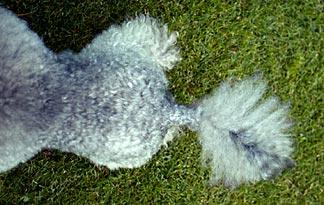
When a dog wags its tail though it could be saying a lot of things depending on how its wagging. It is considered a social signal.

The behaviour can be categorized by vigorous movement or slight movement of the tip of the tail.
Does a dog tail wag involuntarily. Its unclear whether or not the dogs tail wag is voluntary. The reason that we cannot know the answer to this is because we cannot ask the dog to stop wagging their tail and then see if they can do it like we could if it were a person. Dogs tend to wag their tails from any type of.
Ultimately tail wagging in the adult dog tends to be involuntary in response but it can be consciously controlled if the dog chooses to do so. Interpreting your dogs wags. Whilst most of us would automatically state that a wagging tail means a dog that is happy this is not necessarily the case.
Muscles attach to bone segments as far back as the tip via inelastic collagen cords called tendons. So does a dogs tail wag voluntarily or involuntarily. That is is wagging brought about as a biochemical response to a general state of mind or through some deliberate thought process.
Radosta says the changes in tail wag and tail carriage depend on the stimulus and can occur very quickly. As a result experts believe that the tail is also under voluntary control. You dont need to go any further than your dogs veterinarians office to prove this fact.
Sometimes the dogs tail wags so fast that it appears to vibrate. A dog that is tentative about meeting a new person or another dog may wag his tail ever so slightly to indicate that he is insecure. A dog that is very friendly may wag his tail more freely and even wiggle his hips at the same time.
The tail may be low and wagging slowly usually because the dog is hesitant about something. Or the dogs tail may be held high and moving back and forth narrowly but rapidly. This discomfort can be a precursor to aggression.
A tail clamped between your dogs legs means that your dog is really worried and they feel the need to protect themselves. A high tail thats wagging fast often indicates arousal and excitement but how the dog really feels will be down to all sorts of factors such as breed their individual personality what the rest of their body is doing and what activity they are doing at the time. Some dogs tend to move their.
A wagging tail simply indicates that a dog is mentally aroused and engaged with what is going on in his environment not how he will react to whatever is going on. Siracusa says its difficult to parse meaning from just a tail wag and even other dogs who have a better ability to read those signals than humans do sometimes make mistakes. Tail wagging is the behavior of the dog observed as its tail moves back and forth in the same plane.
Within Canidae specifically Canis lupus familiaris the tail plays multiple roles this can include balance and communication. It is considered a social signal. The behaviour can be categorized by vigorous movement or slight movement of the tip of the tail.
Tail wagging can also occur in circular motions and when the tail. Dogs appear to wag their tails in social situations only. It appears that dogs wag their tails in social situations only and do not do so alone.
It may be that it is a response to stimuli that they experience. The position of the tail also appears to have some bearing on the meaning. A wagging tail expresses optimistic ambivalence.
I might like this or I might not rather than simple unreserved pleasure. Canine consciousness is far closer to human awareness than we used to think. Dogs are probably tail-wagging partly by reflex but also partly consciously choosing to do so depending on their mood and the context.
A wagging tail and a few licks are usually a friendly greeting from a dog. A tail lowered and between the legs could indicate fear anxiety or submission. A slow wag could mean that a dog is.
Dogs were more likely to approach a robot dog when its tail was made to wag left rather than right rather than becoming anxious the opposite way around to the Italian study said dog behavior expert John Bradshaw of the University of Bristols school of veterinary science. A wagging tail here may be a sign of curiosity about you but can also simply be a friendly response. Check and see if the dog is looking at you too with happy soft gaze or are they staring hard not such a happy sign.
Understanding your dogs tail wag. The dogs tail may be wagging at a certain rate of speed and the exact tail position can vary greatly. Plus you have to consider that different dog breeds have different types of tails pugs have short curled tails that may not even be able to perform the same functions as say a greyhound tail.
If a dog is sad or scared it usually curles its tail behind itself and puts its head down low. If a dog is just happy and on its own walking around it does not wag its tail the tail is usually up. When a dog wags its tail though it could be saying a lot of things depending on how its wagging.
And in fact a dogs tail is probably one of the most expressive parts of its body just ahead of its ears. This is why docking a dogs tail or cropping its ears hinders the dog.